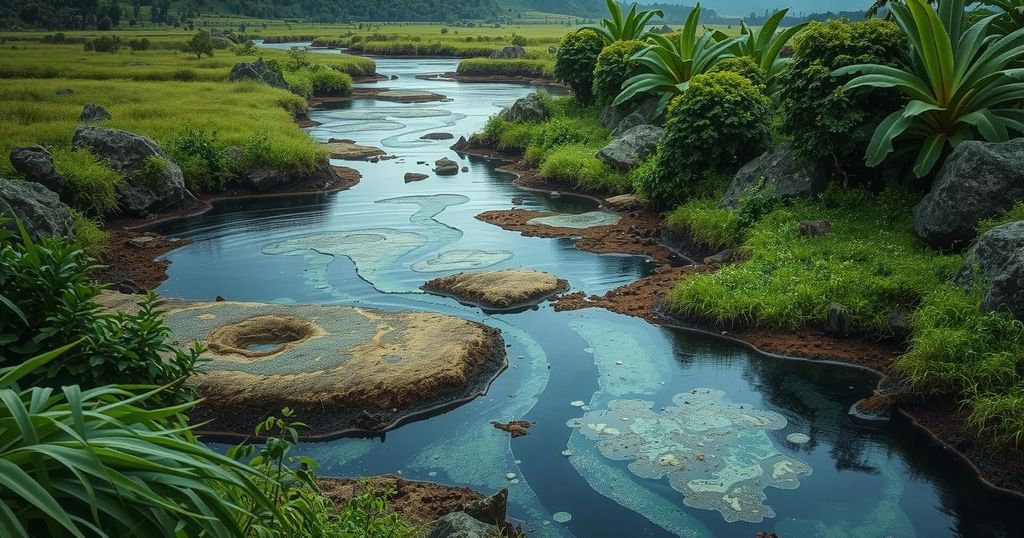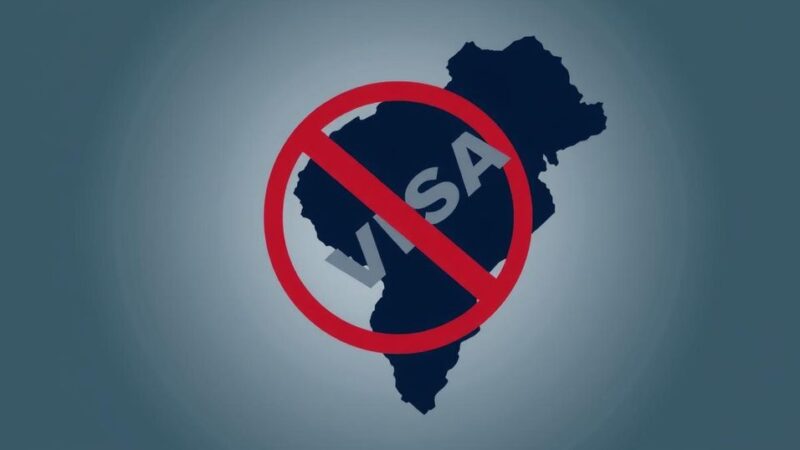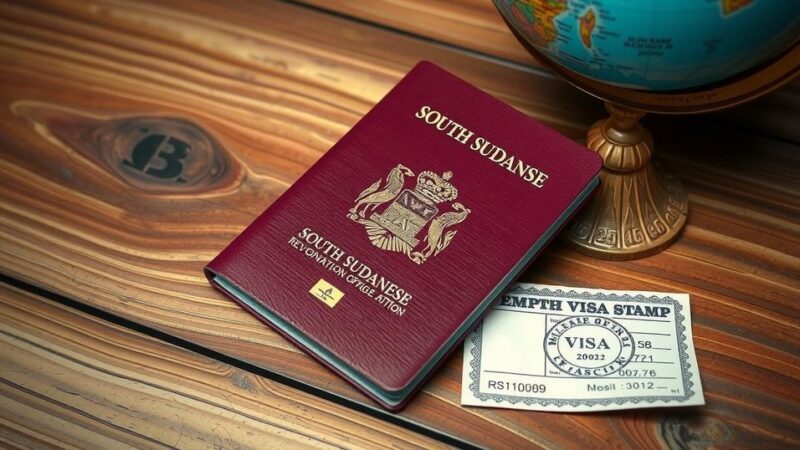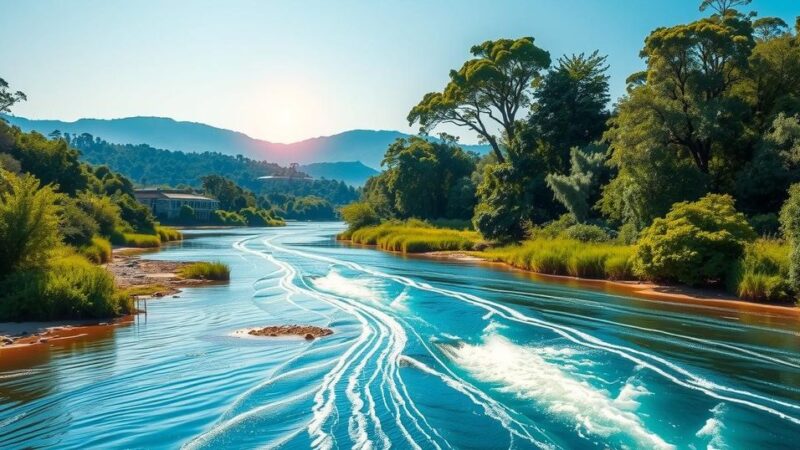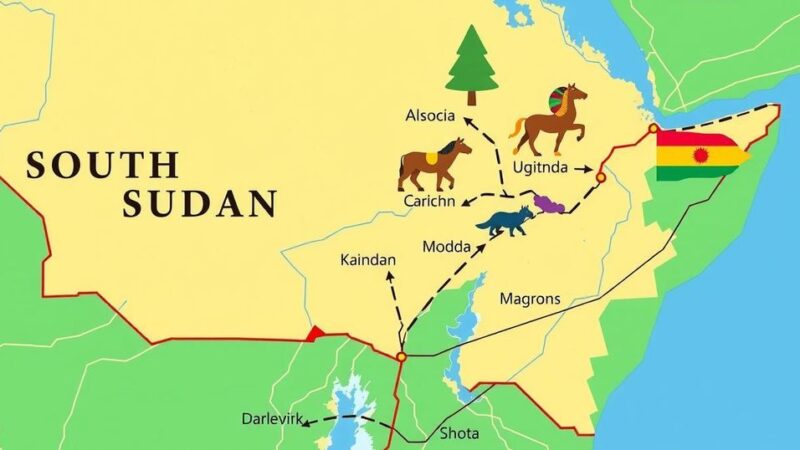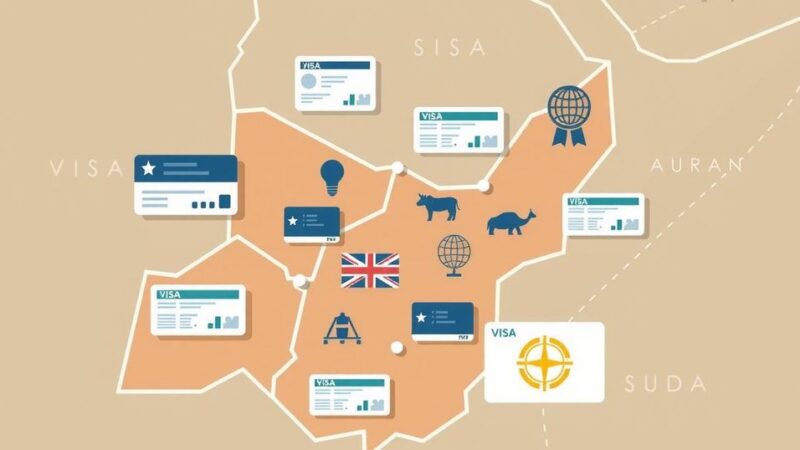Ecuador is confronting an environmental emergency due to an oil slick from a ruptured pipeline affecting multiple rivers and leaving about 500,000 residents without drinking water. An estimated 200,000 barrels of oil have spilled, and recovery efforts are underway while three ships will deliver drinking water to the impacted area. The situation poses severe risks to local livelihoods and biodiversity.
Ecuador is currently dealing with a significant environmental crisis due to an oil slick that has contaminated several rivers, leaving many residents without access to drinking water. This situation arose after a landslide ruptured a major pipeline in the country’s northwest, resulting in tens of thousands of barrels of oil being released into the environment. The Esmeraldas River, where the spill originated, now affects at least four additional waterways.
Approximately 500,000 individuals have been impacted, with many deprived of potable water in a region that primarily depends on rivers for their drinking supply, as noted by Esmeraldas Mayor Vicko Villacis. In response to this crisis, the government has declared an environmental emergency in the province, which is known for its biodiversity, housing over 250 species of wildlife.
Petroecuador, the state-owned company managing the affected pipeline, is mobilizing efforts to recover the crude oil using tanker trucks, particularly in areas where fishing communities are heavily reliant on the rivers for their livelihoods. Although the exact amount of oil spilled has not been confirmed, Mayor Villacis has estimated around 200,000 barrels were released.
To assist affected residents, three ships are slated to deliver drinking water to Esmeraldas starting Tuesday, according to Petroecuador. In 2024, Ecuador produced approximately 475,000 barrels of oil per day, a significant portion of its export economy. The ruptured pipeline is part of the Trans-Ecuadorian Pipeline System (SOTE), which has the capacity to transport 360,000 barrels of oil daily across a distance of 500 kilometers (310 miles) from the Amazon region to the Pacific coast.
In a local fishing village in Esmeraldas, journalists from AFP observed boats and fishing nets coated with oil. Resident Luis Cabezas expressed concern for the future, stating, “If it continues like this, we won’t be able to fish anymore.”
The oil spill in Ecuador has resulted in significant environmental and human impacts, affecting ongoing water supply and local fishing industries. The government’s declaration of an environmental emergency highlights the severity of the situation, alongside ongoing recovery efforts by Petroecuador. With a substantial number of residents reliant on affected water sources, urgent measures must be taken to address the implications of this disaster.
Original Source: www.hendersondispatch.com
